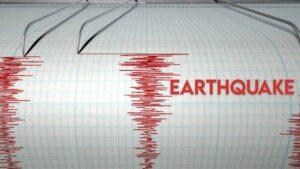Humpback whales found in the Arabian Sea are species of baleen whales that, after the monsoon, migrate to Pakistani waters.
A large pod of endangered Arabian humpback whales has been sighted off the coast of Gwadar, Balochistan, a rare sighting and encouraging for marine conservation. The spectacular moment, in which six humpback whales emerged simultaneously from the sea surface, was recorded with a mobile camera by the captain of a fishing boat who was at sea to capture them.
Humpback whales found in the Arabian Sea are a species of baleen whale found primarily between Yemen and Sri Lanka. After the monsoon season, they migrate to Pakistani waters to feed on shrimp and other small fish. “The presence of a pod of more than six whales is a sign of recovery along the coast of Pakistan,” said Muhammad Moazzam Khan, technical advisor for WWF-Pakistan.
According to WWF-Pakistan, the capsule was spotted yesterday afternoon by a group of fishermen led by Captain Amir Dad Kareem, approximately 11 nautical miles south of the coast of Gwadar, heading from west to east across the Arabian Sea.
A pod of Bryde’s whales was also reported in eastern Gwadar Bay last week, further highlighting the rich biodiversity of Balochistan’s coastal waters. So far, 27 species of whales and dolphins have been recorded in Pakistan’s marine habitats.
Khan explained that Arabian Sea humpback whales are unique: unlike many humpback populations that migrate to Antarctic waters in summer to feed on krill, this group remains confined to the Arabian Sea year-round.
Previous commercial whaling, especially between 1963 and 1967 by Soviet fleets, severely affected their numbers. “This large group shows that the dangerously declining population of the Arabian humpback whale may be returning to the coast of Pakistan,” said Moazzam Khan.
WWF-Pakistan Senior Biodiversity Director Rab Nawaz welcomed recent sightings of humpback whales as well as repeated sightings of Bryde’s and blue whales along the coasts of Sindh and Balochistan.
“We thank the fishing community for monitoring sightings of whales, dolphins and other marine animals and reporting them to WWF. This contribution to citizen science is very valuable,” said Rab Nawaz. “The awareness raised by WWF among fishermen and the general public is helping to protect marine species, which is commendable.”
A majestic species under protection
Marine experts note that humpback whales are among the largest marine mammals on the planet. Their ability to produce powerful ocean sounds and their dramatic leaps out of the water make them easily recognizable. Their distinctive hump-shaped dorsal fin and large, beautifully patterned tail allow observers to identify them from distant distances.
Humpback whales feed on krill and small marine organisms, trapping their prey in bubble nets before swallowing them. As mammals, mother whales nurse their calves for up to a year, making them very vulnerable to environmental threats. The latest sighting has renewed hope that Pakistani waters remain a critical sanctuary for endangered marine life and that the future of the Arabian humpback whale in the region may still be assured.



